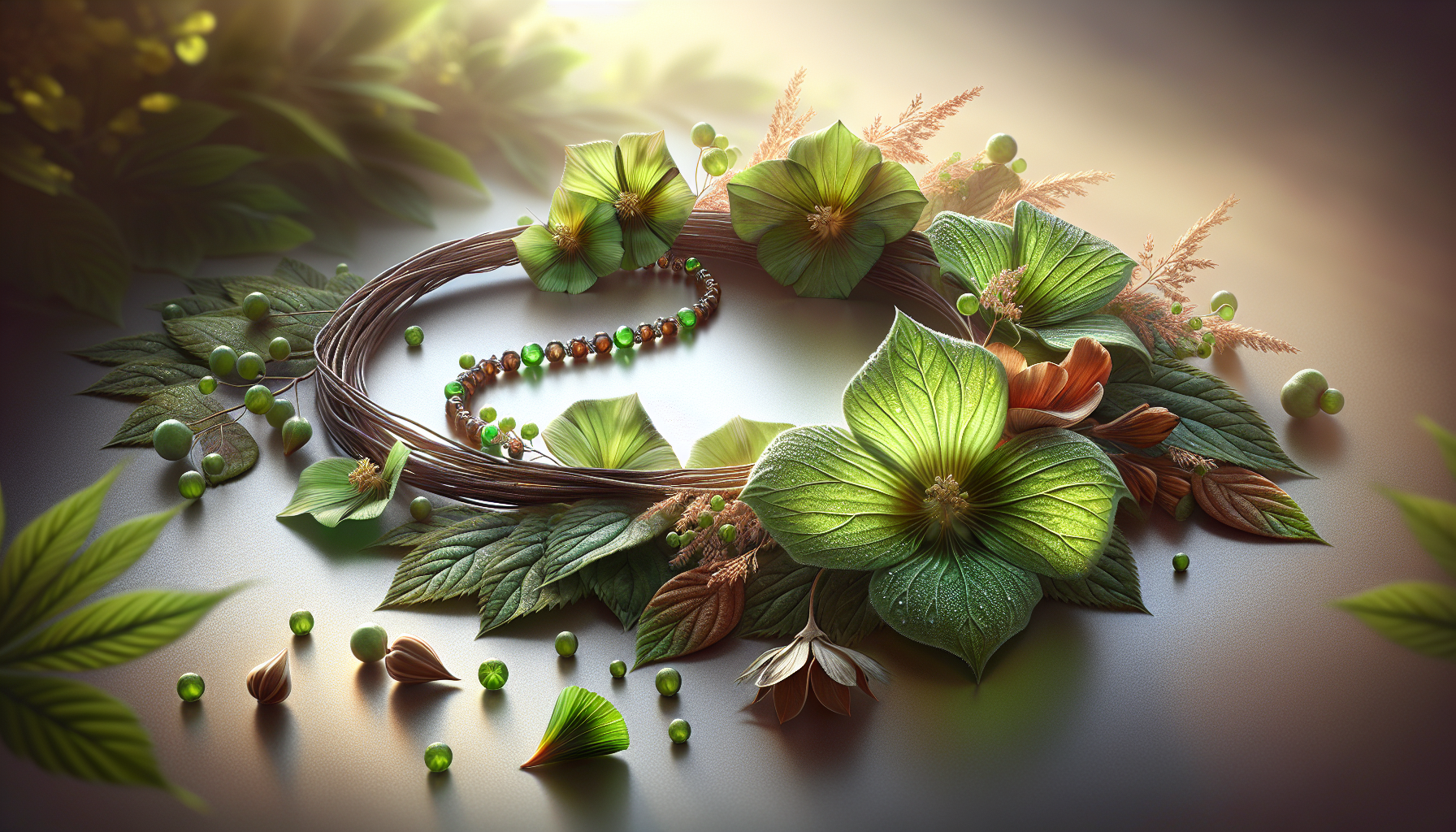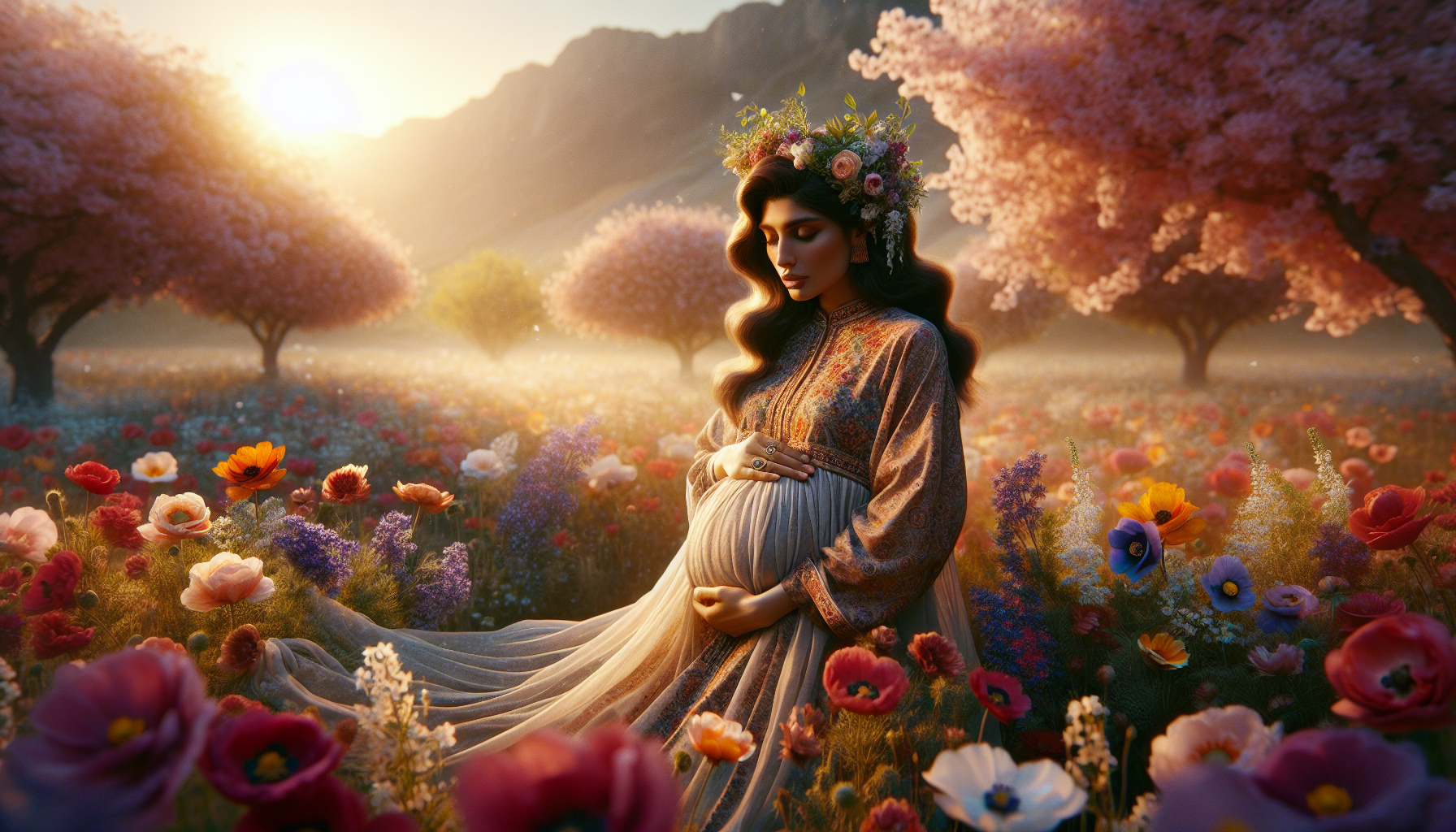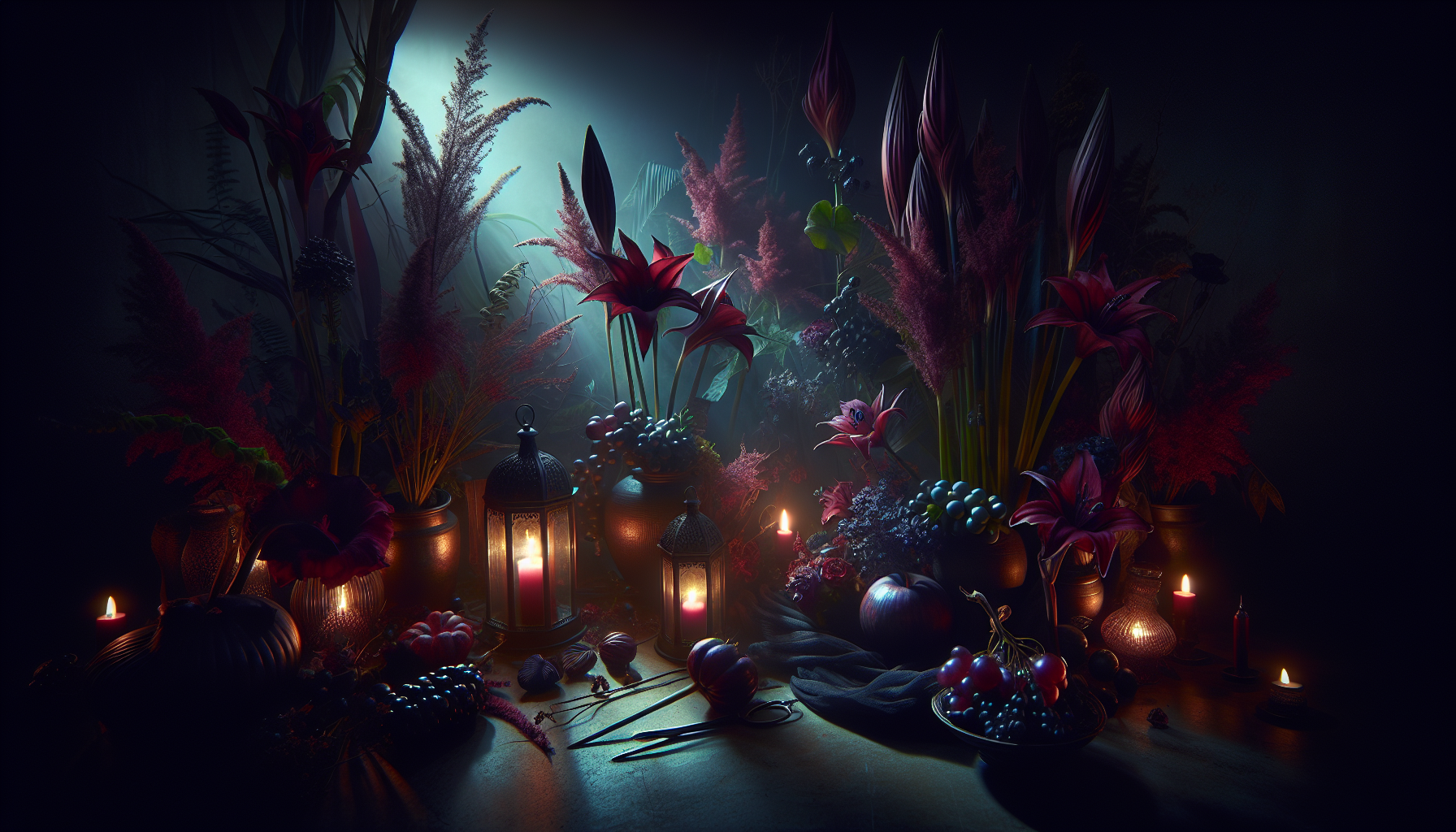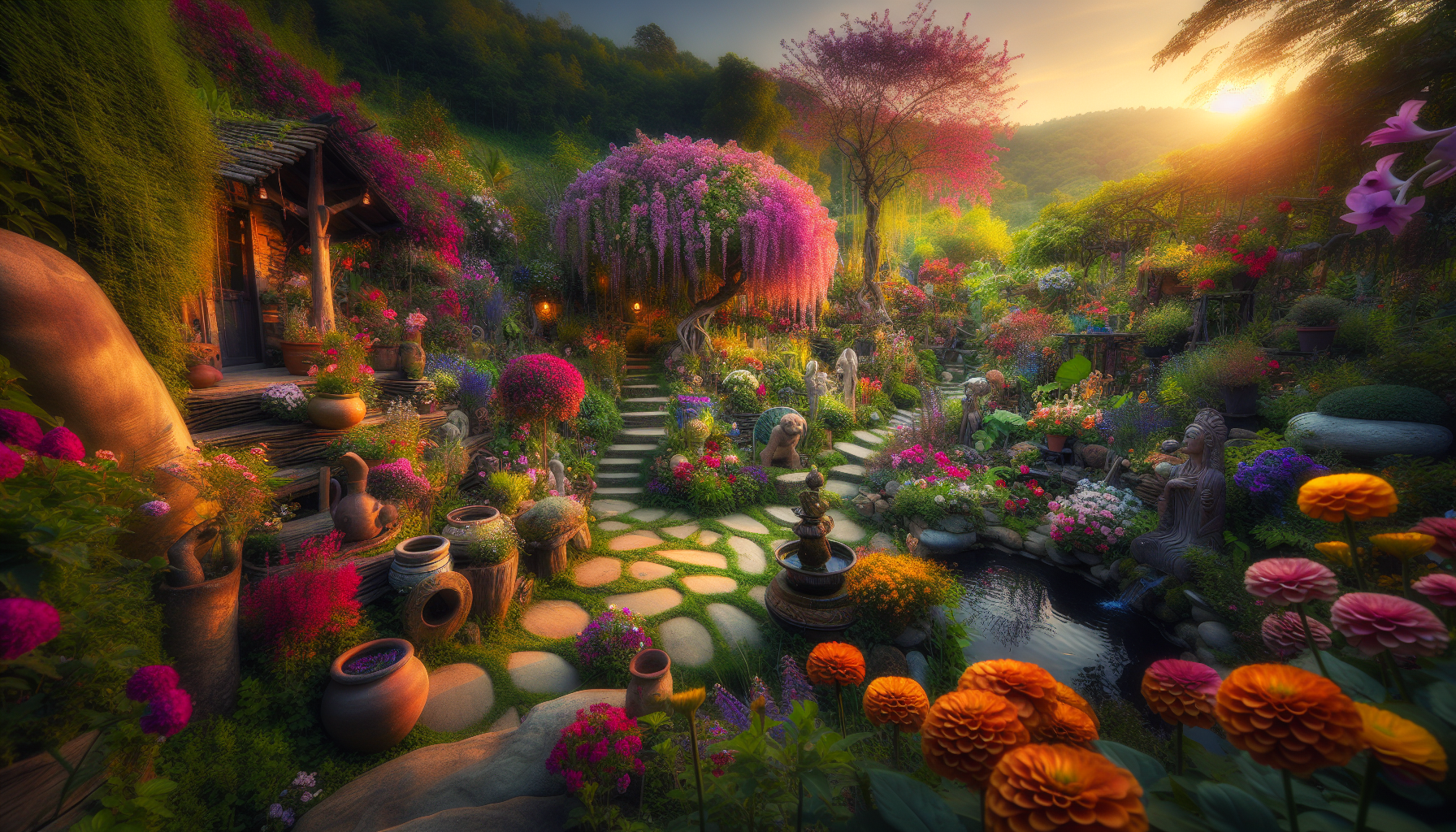Anúncios
In the world of art, few subjects have captivated the imagination and skill of artists as profoundly as flowers. From their vibrant colors and intricate forms to their symbolic meanings and ephemeral beauty, flowers have been a rich source of inspiration for centuries. 🌺 In this exploration of “Blooming Masterpieces,” we delve into the enchanting world of famous paintings that feature flowers, uncovering the stories behind these artworks and the artists who brought them to life. As we journey through the delicate petals and lush compositions, we will witness how these masterpieces transcend time, capturing both the fleeting nature of blooms and the enduring essence of beauty itself.
Anúncios
Flowers in art are far more than mere decorative elements; they are powerful symbols and vehicles of expression. Throughout history, artists have used floral motifs to convey complex themes such as love, mortality, rebirth, and beauty. These elements can be found in the intricate still lifes of the Dutch Golden Age, where each petal and leaf was meticulously rendered to reflect both the natural world and the societal values of the time. We will explore how artists like Jan van Huysum and Rachel Ruysch not only captured the elegance of flowers but also embedded them with layers of meaning that continue to speak to audiences today.
Venturing beyond Europe, we will also look at how flowers have been depicted in other cultures, such as in Japanese ukiyo-e prints. These artworks often feature blossoms like cherry blossoms and chrysanthemums, which hold profound cultural significance. Artists such as Katsushika Hokusai and Utagawa Hiroshige created pieces that celebrated the transient beauty of nature, reflecting the concept of “mono no aware,” the bittersweet realization of the impermanence of things. These floral depictions offer us a window into the cultural and philosophical contexts that shaped them, enriching our understanding of art and life itself.
Anúncios
In the modern era, artists like Georgia O’Keeffe brought a new perspective to floral art, focusing on close-up views that reveal the intricate structures and vibrant colors of flowers. Her work invites viewers to appreciate the beauty of nature in a deeply personal and contemplative way. Through her paintings, we will examine how the representation of flowers evolved in the 20th century, highlighting the shift towards abstraction and the exploration of new artistic techniques and philosophies. O’Keeffe’s iconic depictions challenge us to see flowers not just as objects, but as expressions of emotion and thought.
Join us on this artistic odyssey as we traverse the rich history and diverse interpretations of floral art. From the lush gardens of impressionist painters like Claude Monet to the bold, abstract forms of contemporary artists, we will celebrate the timeless allure of flowers in art. 🌼 By understanding the historical contexts, personal stories, and cultural influences that shaped these masterpieces, we gain a deeper appreciation for the universal beauty that flowers represent. Whether you’re an art aficionado or a casual admirer, this exploration promises to inspire and enlighten, revealing the profound connections between nature, art, and the human experience.
The Timeless Allure of Floral Art
Art has always been a mirror reflecting human emotions, cultural shifts, and the beauty of the natural world. Among the myriad subjects that have captivated artists throughout history, flowers stand out as a timeless motif. Their vibrant colors, intricate forms, and symbolic meanings have inspired countless masterpieces. This fascination with floral art is not merely about their aesthetic appeal but also about their ability to convey deeper themes of life, beauty, and mortality.
From the delicate water lilies of Claude Monet to the bold sunflowers of Vincent van Gogh, paintings featuring flowers have become some of the most beloved works in art history. These masterpieces transcend time, offering viewers a glimpse into the artist’s perspective and the era in which they were created. As you explore these paintings, you’re not just admiring beautiful depictions of flora; you’re engaging with stories, emotions, and artistic innovations that have shaped the course of art.
Flowers have been a subject of fascination across different cultures and time periods. In the 17th century, the Dutch Golden Age saw a surge in floral still life paintings, with artists meticulously capturing the details of tulips, roses, and other blooms. These works often carried symbolic meanings, representing wealth, beauty, or the fleeting nature of life. Similarly, in Japanese art, flowers such as cherry blossoms and chrysanthemums are depicted in traditional paintings, symbolizing the transient beauty of nature. 🌸
Exploring Famous Flower Paintings
Claude Monet’s Water Lilies
Claude Monet, the father of Impressionism, is renowned for his series of water lily paintings. These works, created over three decades, capture the beauty of Monet’s garden in Giverny. The water lilies, depicted in various lights and seasons, are more than just a subject; they are a meditation on nature and perception. Monet’s use of color and light creates a sense of movement and tranquility, inviting viewers to lose themselves in the serene beauty of the scene.
One of the defining features of Monet’s water lilies is his ability to capture the ephemeral quality of light. He painted the same scenes repeatedly, each time capturing the subtle changes in color and mood. This series is a testament to Monet’s dedication to capturing the essence of nature and his innovative approach to painting. If you’re interested in learning more about Monet’s techniques, you might enjoy watching this video: “Monet’s Water Lilies: An Exploration of Color and Light” by Art History Online.
Vincent van Gogh’s Sunflowers
Vincent van Gogh’s Sunflowers series is perhaps one of the most recognizable in the world of art. Painted during a period of intense creativity, these works are a vibrant celebration of color and form. Van Gogh’s use of thick brushstrokes and bold colors captures the vitality and warmth of sunflowers, making them a symbol of hope and friendship. These paintings, with their dynamic composition and expressive style, reflect Van Gogh’s emotional and artistic journey.
Sunflowers held a special significance for Van Gogh, symbolizing gratitude and the cycle of life and death. He painted them in various stages of bloom and decay, showcasing the passage of time and the beauty inherent in every phase of life. To delve deeper into Van Gogh’s relationship with this subject, check out this insightful video: “Van Gogh’s Sunflowers: A Symbol of Hope” by The Art Channel.
Georgia O’Keeffe’s Floral Innovations
Georgia O’Keeffe, known as the “Mother of American Modernism,” brought a fresh perspective to floral paintings. Her large-scale, close-up depictions of flowers are both intimate and monumental, encouraging viewers to appreciate the details and intricacies of nature. O’Keeffe’s works challenge traditional perceptions of floral art, focusing on shape, color, and form in a way that is both abstract and deeply personal.
O’Keeffe’s flower paintings are more than mere representations; they are explorations of emotion and perception. By magnifying the subject, she draws attention to the beauty often overlooked in everyday life. Her innovative approach continues to inspire artists and art lovers alike. For a closer look at O’Keeffe’s groundbreaking work, watch this video: “The Art of Georgia O’Keeffe: Flowers and Beyond” by Great Art Explained.
The Symbolism of Flowers in Art
Throughout art history, flowers have been laden with symbolism. They can represent a wide range of emotions and concepts, from love and beauty to mortality and decay. Understanding the symbolic meanings of flowers in paintings can enhance our appreciation of the artworks and provide insight into the artist’s intentions and cultural context.
In Western art, roses are often associated with love and beauty, while lilies can symbolize purity and virtue. In contrast, the lotus flower in Eastern art is a symbol of enlightenment and spiritual awakening. The specific flowers chosen by artists can offer clues about the narrative or theme of the artwork. For instance, in the Dutch still lifes of the 17th century, tulips were a symbol of wealth and status during the Tulip Mania period.
The table below provides a comparison of common flower symbolism across different cultures:
| Flower | Western Symbolism | Eastern Symbolism |
|---|---|---|
| Rose | Love, Beauty | Romance, Spirituality |
| Lily | Purity, Innocence | Majesty, Renewal |
| Lotus | Birth, Rebirth | Enlightenment, Purity |
| Sunflower | Adoration, Loyalty | Longevity, Faith |
As you explore the rich symbolism of flowers in art, consider how these meanings might shift depending on cultural context and the artist’s personal interpretation. This understanding can add depth to your experience of viewing these masterpieces. 🖼️
Impact of Floral Paintings on Modern Art
The influence of floral paintings extends beyond their immediate beauty, impacting the development of modern art in profound ways. Many contemporary artists draw inspiration from classic floral motifs, reinterpreting them through the lens of modern sensibilities and techniques. This ongoing dialogue between past and present highlights the enduring relevance of floral art.
Artists such as Yayoi Kusama and Takashi Murakami incorporate floral themes into their work, blending traditional aesthetics with contemporary styles. Kusama’s polka-dotted flowers, for example, challenge perceptions of nature and identity, while Murakami’s bright and playful flowers question the boundaries between high and low art. This fusion of old and new creates dynamic artworks that resonate with today’s audiences.
The rise of digital art has also opened new possibilities for floral paintings. Digital artists experiment with colors, textures, and forms, pushing the boundaries of traditional floral art. These innovations reflect a growing interest in exploring nature through technology, offering fresh perspectives on familiar subjects.
Floral Art in Public Spaces
Beyond the confines of galleries and museums, floral art has found its way into public spaces, enriching urban environments. Street artists and muralists use flowers as powerful symbols of community and resilience. These vibrant artworks transform cityscapes, inviting passersby to pause and reflect on the beauty of nature in unexpected places.
Public art projects like the Flower Tower in Paris, covered entirely in blooming plants, demonstrate the potential of floral art to inspire and uplift. These installations serve as reminders of the importance of nature in our daily lives and the role of art in fostering connections between people and the environment. 🌻
How to Appreciate Floral Masterpieces
To truly appreciate floral masterpieces, it helps to approach them with an open mind and a keen eye for detail. Here are some tips for engaging with these works of art:
- Observe the Use of Color: Notice how artists use color to evoke emotions and create atmosphere. Pay attention to color contrasts and harmonies that contribute to the painting’s overall impact.
- Consider the Composition: Examine how the elements are arranged within the painting. Look for lines, shapes, and patterns that guide your eye through the artwork.
- Explore the Symbolism: Research the symbolic meanings of the flowers depicted. Consider how these symbols relate to the painting’s themes and the artist’s intentions.
- Reflect on the Context: Think about the historical and cultural context in which the artwork was created. Consider how these factors influence your interpretation and appreciation of the piece.
By taking the time to explore these aspects, you’ll deepen your understanding and enjoyment of floral paintings. Each masterpiece offers a unique window into the artist’s world and the timeless beauty of nature.
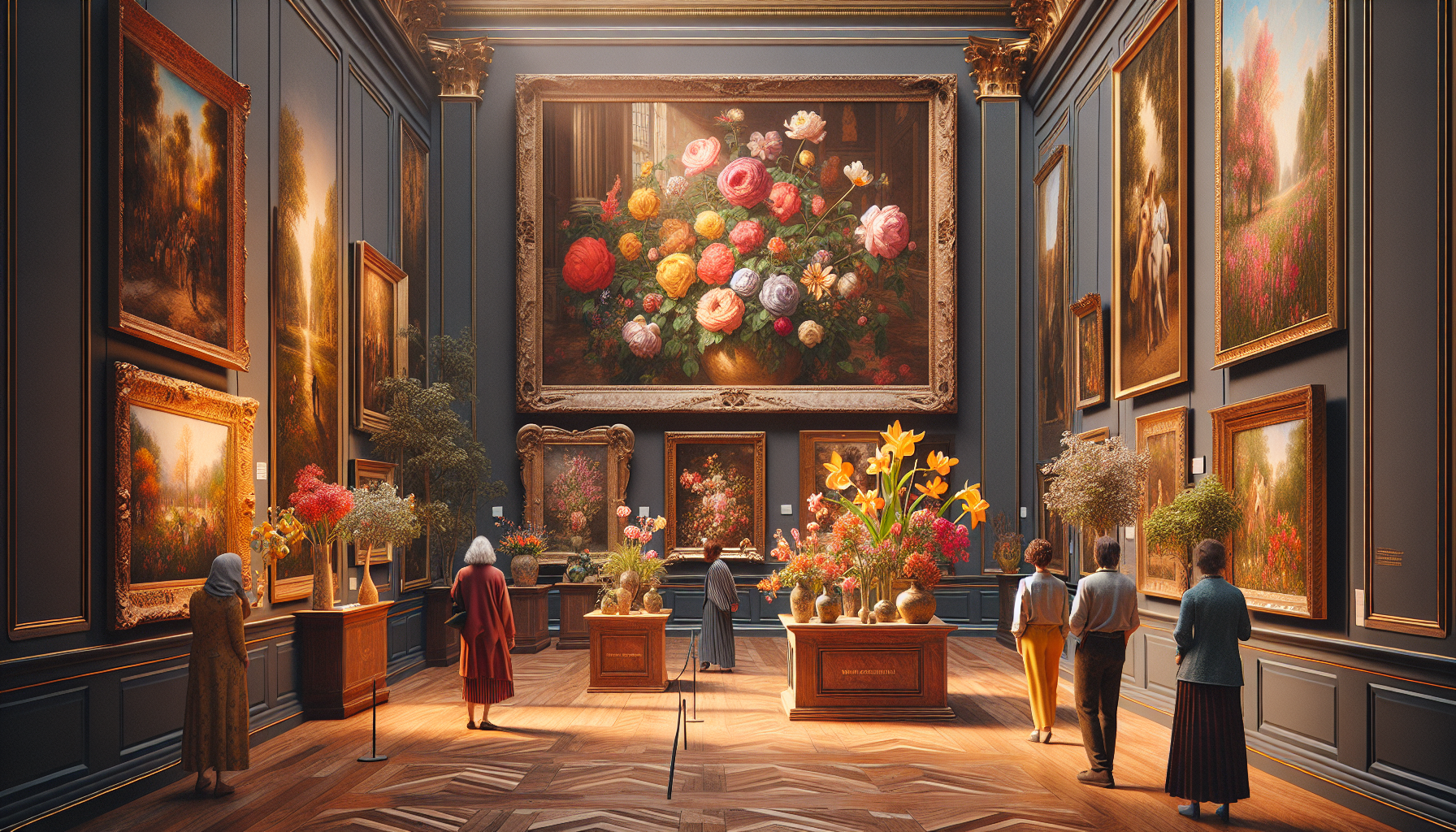
Conclusion
In conclusion, the exploration of famous paintings featuring flowers reveals a timeless appreciation for nature’s beauty and a deep connection to human emotion and cultural expression. Throughout the centuries, artists have harnessed the delicate allure of flowers to convey complex themes, from the transient nature of life to the celebration of beauty and the divine. The vivid colors, intricate details, and symbolic meanings encapsulated in these artworks continue to captivate audiences and evoke profound reflections on both personal and universal levels.
One of the key points highlighted in this article is the symbolic significance of flowers in art. Whether representing purity, love, death, or rebirth, each bloom carries its own narrative weight, enriching the viewer’s experience and understanding. The works of masters like Vincent van Gogh, Claude Monet, and Georgia O’Keeffe demonstrate how flowers can be much more than mere aesthetic subjects; they are powerful vessels of emotional depth and storytelling.
Furthermore, the technical prowess displayed in these paintings underscores the evolution of artistic techniques and styles. From the realistic precision of Dutch still lifes to the vibrant, expressive brushstrokes of the Impressionists, each painting invites us to appreciate not only the subject but also the skill and creativity of the artist. This journey through the world of floral art illustrates how artists have continually pushed the boundaries of creativity, using flowers as a lens through which to explore color, form, and composition.
Importantly, the exploration of floral masterpieces serves as a reminder of the enduring connection between humanity and nature. In an era where the natural world faces unprecedented challenges, these paintings inspire us to cherish and protect our environment. They remind us of the beauty and fragility of life, encouraging mindfulness and appreciation for the natural world around us.
As you reflect on the masterpieces discussed, consider the emotions and stories they evoke within you. Allow these paintings to inspire your own creativity and perspective on life. Whether you are an artist, a lover of art, or someone seeking to find beauty in everyday moments, there is much to be learned from the timeless elegance of flowers in art.
We encourage you to share this journey with others. Discuss these paintings with friends and family, explore your interpretations, and perhaps even visit a museum or gallery to experience the beauty of these works firsthand. By engaging with art, we not only enrich our own lives but also contribute to a broader cultural appreciation and dialogue.
For those interested in diving deeper into the world of floral art, numerous resources are available online. Websites such as The Art Institute of Chicago and The Met Museum offer extensive collections and insights into floral artworks, providing further opportunities for exploration and learning.
Inspire others by sharing your thoughts and discoveries on social media or through personal blogs. Encourage your community to explore the timeless beauty and significance of floral paintings, fostering a collective appreciation for this enchanting genre.
As we conclude our exploration of floral masterpieces, let us carry forward the inspiration and wisdom these paintings impart. May we continue to find beauty in the world around us, celebrate the creativity of artists past and present, and nurture our connection to nature and each other. 🌺
Thank you for joining us on this artistic journey. Your engagement and passion for art make these discussions meaningful and transformative. We look forward to hearing your thoughts and seeing how you incorporate the timeless beauty of flowers into your own life and community.
Toni Santos is a visual storyteller and artisan whose creations celebrate the poetry of the natural world. Through his thoughtful artistic lens, Toni captures the elegance of botanical forms, transforming them into meaningful expressions of symbolism, resilience, and timeless beauty.
His journey is deeply rooted in a passion for flora and the mysteries they carry. From the shape of a petal to the curve of a vine, each design Toni brings to life reflects a deeper narrative — one of growth, transformation, and harmony with nature. Whether crafting symbolic floral jewelry, enchanted botanical illustrations, or seasonal visual studies, Toni’s work evokes the quiet magic found in Earth’s most delicate details.
With a background in handcrafted artistry and visual design, Toni blends technique with intention. His creations do more than decorate — they speak, often inspired by ancient meanings behind flowers, the cycles of the seasons, and the invisible bonds between nature and spirit.
As the creative voice behind Vizovex, Toni shares this botanical journey with the world, offering curated stories, handcrafted collections, and thoughtful articles that help others reconnect with nature’s symbolism and artistic essence.
His work is a tribute to:
-
The quiet power of flowers and their messages
-
The art of visual symbolism in everyday life
-
The beauty of slowing down to see what’s hidden in plain sight
Whether you’re an artist, a nature lover, or someone drawn to the deeper meanings behind the natural world, Toni welcomes you to explore a space where aesthetics meet soul — one petal, one story, one creation at a time.


